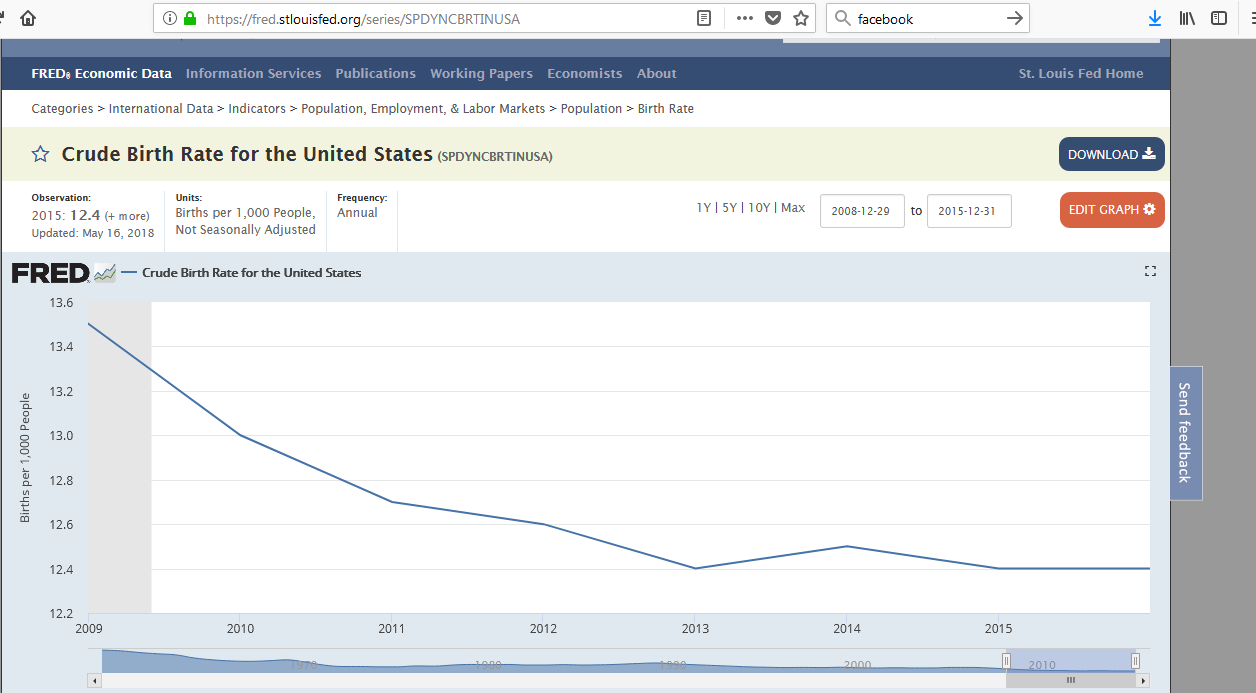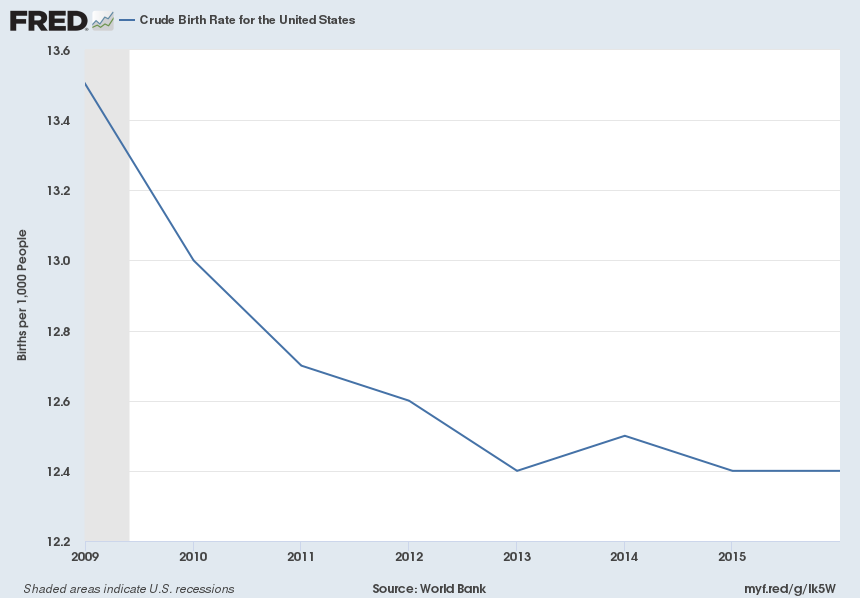The data set, the crude birth rate for the United States between 2010 and 2015 explores the trend in the number of annual live births per 1,000 persons. Originally published by World Bank, this data set was downloaded from the FRED Economic data website, which is affiliated with the Federal Reserve Bank of ST. Louis (see Figure 1). The data was released by the World Bank under the world development indicators research project. This research paper examines the crude birthrate data set for the United States in terms of its content, interest, and possible usage.

Source of the Data and Purpose
The World Bank produced this dataset under the world development indicators research. This entity produced this data by examining the number of live births per 1,000 persons in a population across the globe to compare the rate of natural increase or population change. The crude birth rate for the United States dataset is produced annually by the World Bank to track changes in population and its impacts on the economy.
Specifically, this dataset is combined with the crude death rate to determine the performance of the population growth index in the US. The purpose of this dataset is also to guide in the comparative review of population change from one country or region to another and relate these variances to the prevailing economic and social indicators. As a result, the World Bank can follow and make an accurate forecast of potential population growth rates against other significant determent indicators. Moreover, the crude birth rate is also used by the World Bank to study trends in mortality rate and its prevalence across different religions.
How I Can Use the Dataset
This dataset captures the live births in a population. I might use the dataset to research the population growth rate, especially when combined with the crude death rate.
Variable Definition
The units used in the crude birth rate for the United States are births per 1,000 persons in the populations without any seasonal adjustment. This means that the live births are the primary variable in the data set while the number of observations and frequencies are the secondary variables. Specifically, the period of observation was between 2010 and 2015, which amounts to five observable sets (‘Crude Birth Rate for the United States).
The frequency of these observations was fixed to an annual time frame. The crude birth rate variable is a population indicator. The crude birth rate is defined as the summation of live births that occur within a year in the US per 1,000 persons in a population. The estimations were consistently made at midyear for each year of observation.
Dates
The data set extends to more than five decades, that is, from 1960. However, the researcher captured data for a period of six years, from 2010 to 2015 (‘Crude Birth Rate for the United States). The recordings were carried out in the mid of each of the six years observed. There was a single estimated observation per year, consistently recorded at the sixth month.
Format
The data set comes in formats of image (graph), PowerPoint (graph), CSV (data), Excel (data), and PDF (graph). These formats have simplified the data to facilitate a comprehensive review of observable trends. As captured in table 1 and graph 1, the format for this data set is a transformation from raw data to graphic representation.
Table 1: Excel format of the dataset.

Geographic Extent
This dataset covers the entire US population spread evenly to cover all the regions. Through strategic sampling, the data capture the actual crude birth rate in all the United States of America territories. This means that the dataset is not limited to a single region in the US.
Definitions/Manual
The dataset has a manual defining the frequency of observations, the definition of the crude birth rate, and the unit of measurement, which are 1,000 persons per population. These indicators are correlated to the number of live births to establish the crude birth rate.
Limitation of the Dataset
The only limitation of this dataset is that births per thousand persons are not seasonally adjusted. This means that the error margin might be significant enough to affect the accuracy of these results presented in a table and a graph.
Accessing Data
Accessing this dataset was free since it was captured from a non-profit website. However, the data was limited to what has already been synthesized.
Rights to Use Data and Authenticity
This dataset is available in the public domain and does not require any special right in usage. Moreover, the dataset is authentic since the World Bank is a reputable organization that has consistently produced similar data for more than four decades. Moreover, the FRED economic data website is run by the reputable Federal Reserve Bank of St. Louis.
Bibliography
“Crude Birth Rate for the United States (SPDYNCBRTINUSA).” FRED Economic Data. Web.